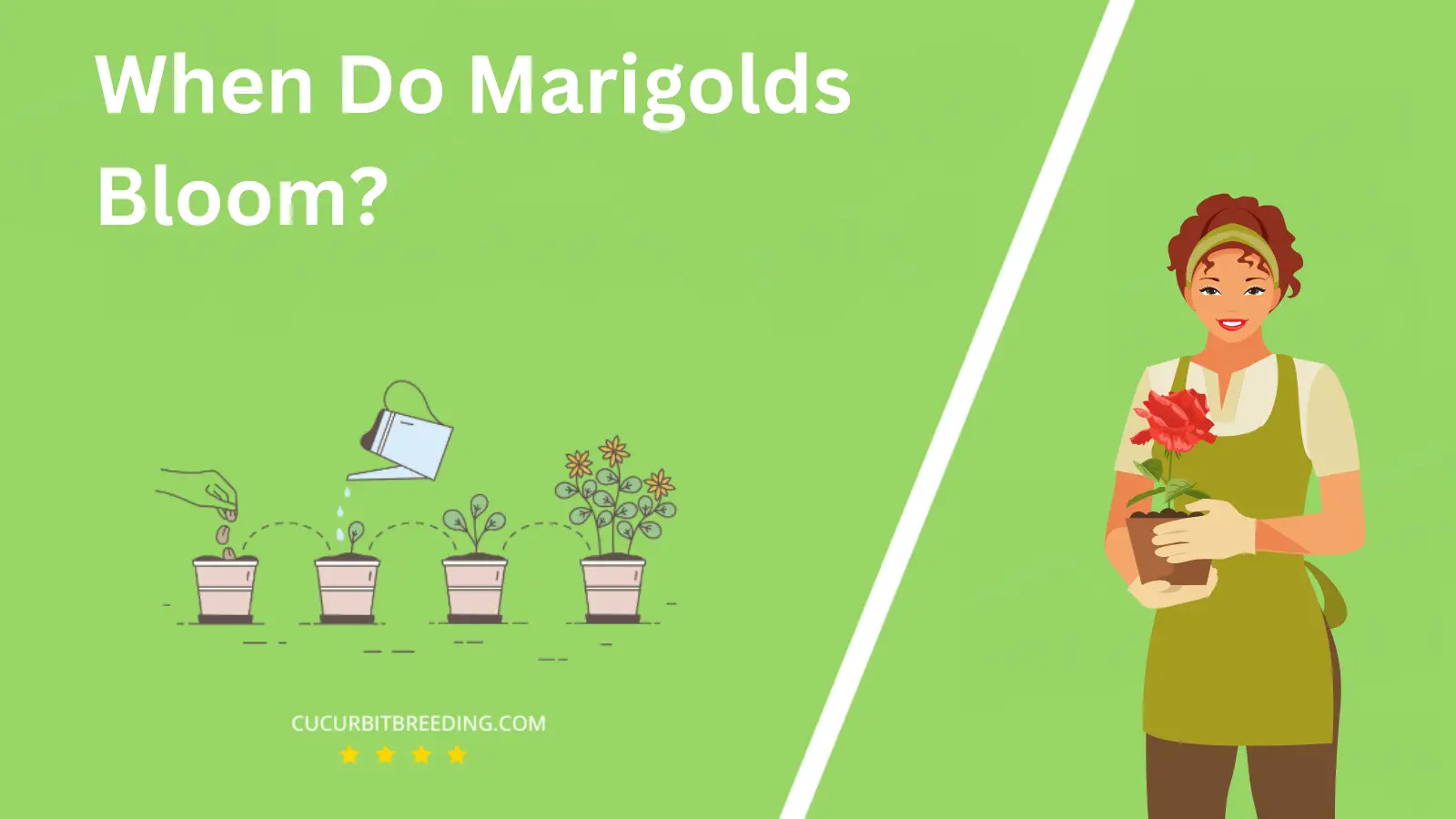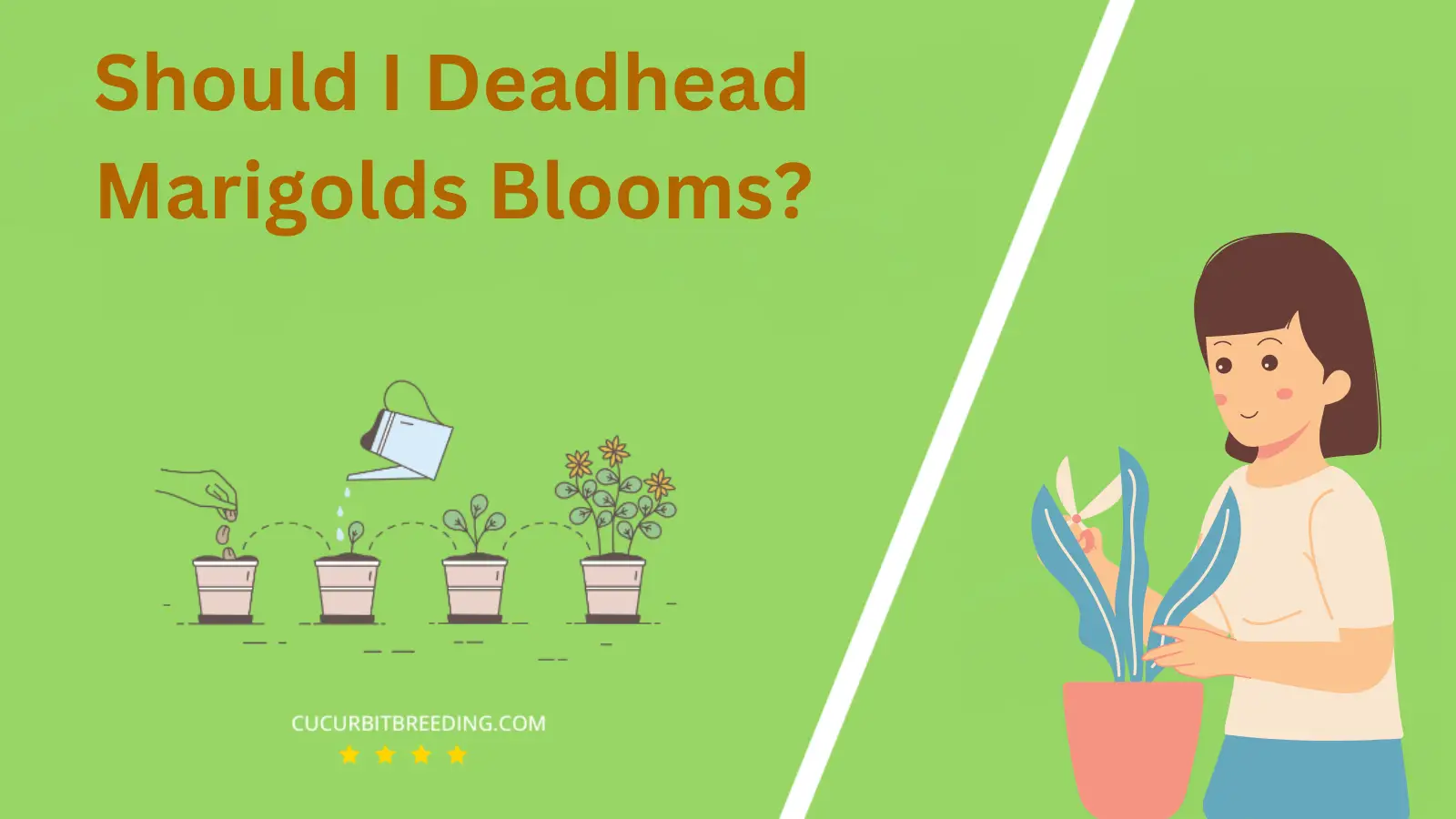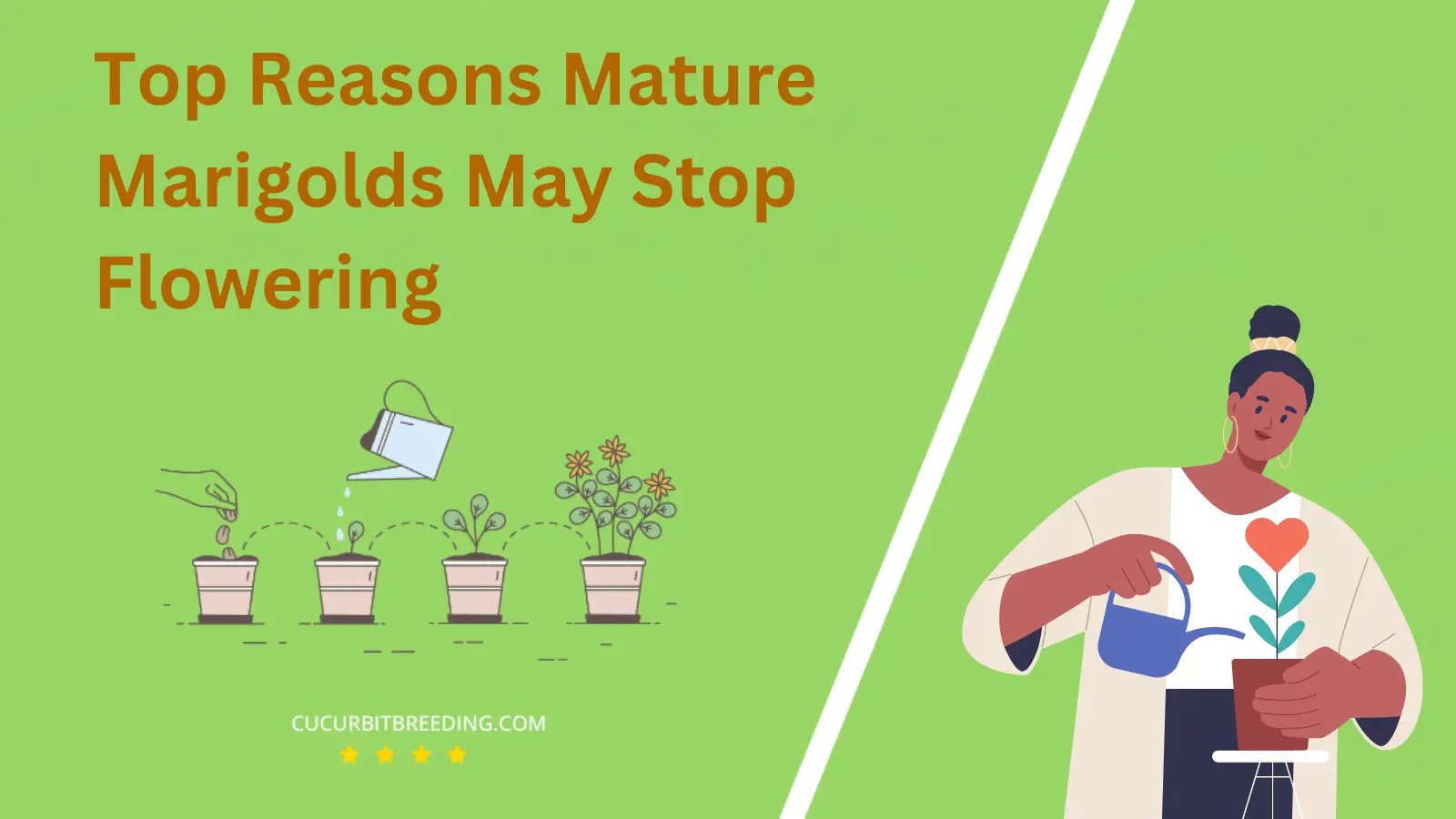
If you’re wondering, when do marigolds bloom, you’re not alone. This common question is on the minds of many garden enthusiasts. Marigolds, with their vibrant colors and lush foliage, are a favorite among gardeners all over the world.
These sun-loving flowers have a blooming season that’s quite remarkable. Let’s delve into the world of marigolds and discover their blooming secrets…
When Do Marigolds Bloom?
Marigolds typically bloom from early summer until the first frost of fall. Depending on the specific climate and weather conditions, this can be from June to October in many regions. They are known for their long-lasting, vibrant flowers that add color to gardens throughout the warm months.
| Stage | Description |
|---|---|
| Germination | Spring (March-April) |
| Growth | Spring to early summer (March-June) |
| Blooming | Summer (June, July, August) |
| Dormancy | Winter (December to February) |
How Long Do Marigolds Bloom?
Marigolds typically bloom from early summer until the first frost of fall. However, the exact duration can vary based on the specific variety of marigold and the local growing conditions. Under ideal circumstances, marigolds can bloom for several months.
How Light Affects Marigolds Blooms?
Light significantly affects the blooming of Marigolds. These plants are native to sunny regions and require a substantial amount of light for optimal growth and blooming. Marigolds need full sun, which is at least 6 to 8 hours of sunlight per day, to bloom abundantly. Inadequate sunlight can lead to fewer blooms, elongated stems, and weaker plants overall. Thus, for marigolds to thrive and produce the most flowers, they should be grown in areas that receive ample sunlight.
Will Marigolds Bloom the First Year You Plant Them?
Yes, Marigolds will bloom the first year you plant them. As annuals, they typically complete their lifecycle, from seed to flower, in a single growing season. Therefore, if you plant marigold seeds in the spring, you can expect to see blooms in the same year, usually starting in early summer and continuing until the first frost in fall.
Will Marigolds Bloom Every Year?
Marigolds are generally considered an annual plant, meaning they complete their lifecycle within one growing season. They sprout, bloom, and die all within a single year. So technically, individual marigold plants do not bloom every year. However, if marigold seeds are left to overwinter in the ground, new plants may sprout in the spring and bloom that year. This can give the illusion of marigolds blooming every year. But it’s important to understand that these are new plants, not the same ones blooming again.

Should I Deadhead Marigolds Blooms?
Yes, you should deadhead marigolds blooms. Deadheading, or the process of removing faded or dead flowers, encourages the plant to produce more blooms throughout the growing season. It helps to divert the energy of the plant towards producing more flowers and maintaining overall health, rather than developing seeds. This process can also keep the plant looking neat and tidy.
Top Reasons Mature Marigolds May Stop Flowering

Mature Marigolds may stop flowering due to several reasons. Insufficient sunlight is one of the primary reasons. Marigolds require a minimum of six hours of direct sunlight each day. If they aren’t receiving this, their blooming may be affected.
Another significant factor is over or under watering. Marigolds require well-drained soil and don’t do well in waterlogged conditions. Simultaneously, if they’re not getting enough water, they may also stop flowering.
Finally, poor soil conditions can also affect Marigold flowering. If the soil is lacking in nutrients or is too acidic or alkaline, the plants may not flower as expected. Regular soil testing and amendment can help address this issue.